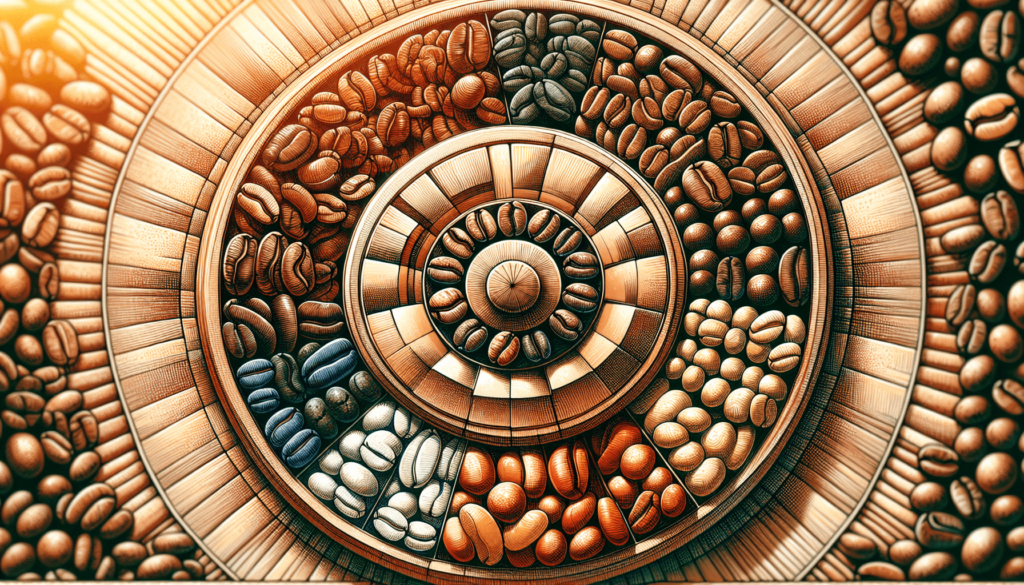Have you ever wondered about the different flavors of coffee and what makes each cup unique? Coffee has an incredible depth and diversity that might surprise you. By learning about the specific flavors, you can enhance your appreciation for this beloved beverage and make more informed choices whether you’re brewing at home or ordering at a café.

Understanding Coffee Flavors
Coffee flavors are influenced by many factors, including the type of coffee bean, where it’s grown, how it’s processed, and how it’s brewed. However, for simplicity, coffee flavors are often categorized into four main categories: sweet, sour, bitter, and salty. Let’s dive into each of these flavors to better understand their nuances and how to identify them in your cup.
Sweet Flavors
Sweetness in coffee is often the most desirable flavor note. A naturally sweet coffee doesn’t necessarily mean it tastes like sugar but rather that it has pleasant, mild, and agreeable flavor notes. These can range from fruity to nutty to chocolaty.
Fruity Notes
- Citrus: Think of flavors like orange, lemon, or grapefruit. These notes often come from coffees grown in regions like Ethiopia and Kenya.
- Berry: Flavors like blueberry, strawberry, or raspberry can be found in certain Ethiopian coffees.
- Stone Fruit: Notes of peach, apricot, or plum can show up in coffees from regions like Central America.
Nutty and Chocolaty
- Nutty: Hazelnut, almond, and walnut are common nutty notes found in coffees from regions like Brazil.
- Chocolaty: Many coffees from regions like Colombia and Brazil have a delightful chocolate-like flavor, ranging from milk chocolate to dark chocolate.
Sour Flavors
Sourness in coffee is often attributed to the acid content. While too much sourness can be unpleasant, a balanced sourness can provide brightness and complexity to the coffee.
Types of Acidity
- Citric Acid: This gives coffee a tart, citrus-like quality. It’s often found in beans from regions with high altitudes like Kenya.
- Malic Acid: This acid provides a green apple-like sourness. Coffees from Guatemala and Costa Rica may have these notes.
- Acetic Acid: This can impart a vinegary note, often found in fermented coffees or naturally processed beans.
Bitter Flavors
Bitterness is a significant component of coffee flavor, but it needs to be well-balanced. Overly bitter coffee can be a sign of over-roasting or brewing issues.
Sources of Bitterness
- Under-Extraction: When coffee isn’t brewed long enough, it can result in excessive bitterness.
- Over-Roasting: Dark roast beans can often be more bitter due to the caramelization of sugars and the creation of bitter compounds.
- Tannins: These are naturally occurring compounds that can contribute to astringent, bitter flavors.
Salty Flavors
Saltiness in coffee is rare but can occur, usually contributing to a more balanced and complex flavor profile. It’s subtle and often enhances other flavors.
Mineral and Earthy Notes
- Mineral: Some beans, especially those grown in volcanic soil, can have a slight mineral quality, giving a touch of saltiness.
- Earthy: Coffees from regions like Sumatra often have earthy, slightly salty notes that add to their unique profile.
Influence of Coffee Bean Varieties
Different coffee bean varieties offer different flavor profiles. Here’s a quick look at some popular varieties and their typical flavors:
| Coffee Bean Variety | Typical Flavors |
|---|---|
| Arabica | Sweet, fruity, chocolaty, nutty |
| Robusta | Bitter, earthy, nutty |
| Liberica | Fruity, woody, smoky |
| Excelsa | Tart, fruity, dark and mysterious |
Arabica
Arabica beans are generally regarded as high-quality beans with a wide range of flavors, often sweet, fruity, or nutty. They are grown at high altitudes, usually in Latin America, Africa, and Asia.
Robusta
Robusta beans tend to be more bitter and have a more earthy flavor. They also contain higher caffeine levels. Robusta is widely grown in Central and West Africa, Southeast Asia, and parts of Brazil.
Liberica
Liberica beans offer unique flavors, often described as fruity, woody, and smoky. They are less common and primarily grown in Malaysia and West Africa.
Excelsa
Excelsa beans are known for their tart, fruity flavors and more mysterious, dark undertones. They are mainly grown in Southeast Asia and are used to add complexity to coffee blends.
Processing Methods and Their Impact on Flavor
The way coffee beans are processed after harvesting can significantly affect their flavor.
Natural (Dry) Process
In the natural process, coffee cherries are dried whole, allowing the beans to absorb the fruity flavors from the cherry. This can result in coffees with strong fruit notes and a heavier body.
Washed (Wet) Process
The washed process involves removing the coffee cherry’s outer layers before drying the beans. This method often results in cleaner flavors with brighter acidity. Coffees processed this way can have floral, citrus, and berry notes.
Honey Process
Honey processes are a hybrid of the natural and washed methods. The beans are depulped but some of the mucilage remains, resulting in flavor notes that are both fruity and clean. This method can bring out flavors like toffee, caramel, and tropical fruit.
Anaerobic Fermentation
This newer method involves fermenting the coffee beans in an oxygen-free environment, often producing intense, complex flavors. This can lead to tasting notes like wine, exotic fruit, and a high level of sweetness.
Brewing Methods and Their Impact on Flavor
How you brew your coffee can also influence its flavor. Here are some popular methods and the types of flavors they tend to highlight:
Espresso
Espresso brewing uses high pressure to extract a concentrated coffee shot. It often results in a bold, intense flavor with a rich, syrupy body.
French Press
The French Press method allows coffee grounds to steep in water, resulting in a rich, full-bodied coffee. It can highlight the coffee’s sweet and fruity notes.
Pour-Over
Pour-over brewing involves pouring water over coffee grounds in a filter. This method usually produces a cleaner cup with bright acidity and subtle flavors.
Cold Brew
Cold Brew is made by steeping coffee grounds in cold water for an extended period. This results in a smooth, less acidic coffee with chocolaty, nutty, and sometimes fruity notes.
| Brewing Method | Flavor Notes |
|---|---|
| Espresso | Bold, Rich, Syrupy |
| French Press | Full-bodied, Sweet, Fruity |
| Pour-Over | Clean, Bright, Subtle |
| Cold Brew | Smooth, Less acidic, Chocolaty, Nutty, Fruity |

Conclusion
Understanding the four main flavors of coffee—sweet, sour, bitter, and salty, as well as the factors that influence these flavors, can significantly enrich your coffee experience. By recognizing the types of flavors in different varieties and brewing methods, you can better appreciate the complexity and depth of this beloved beverage. So, the next time you sip your coffee, take a moment to identify these flavors and savor the unique characteristics of your cup.
